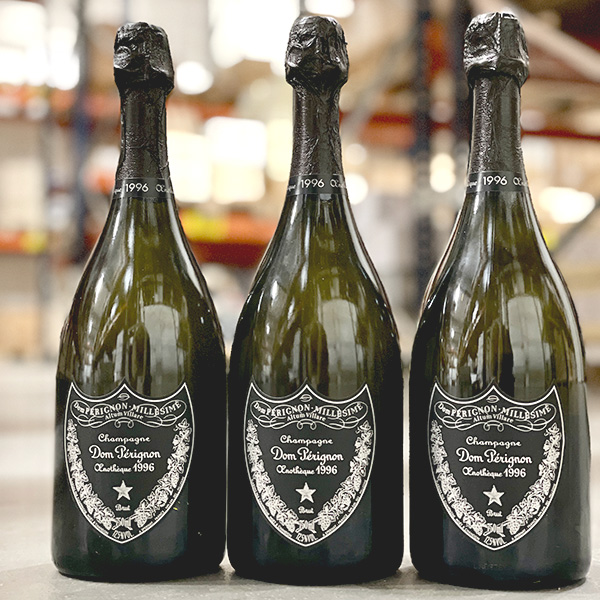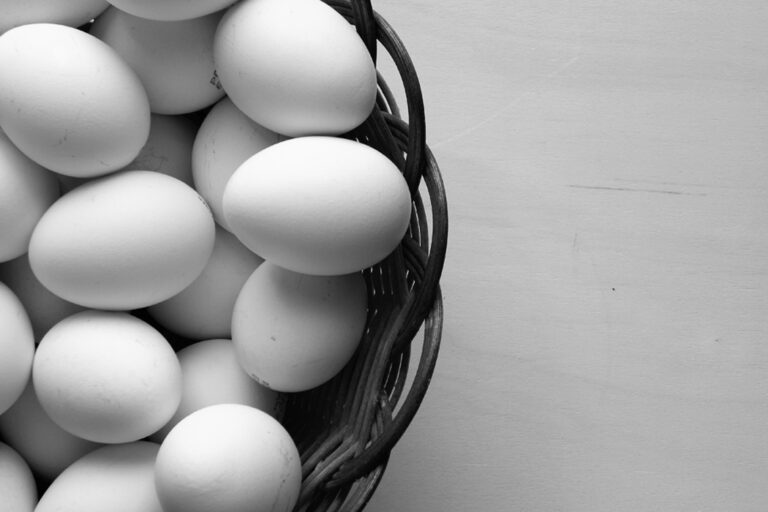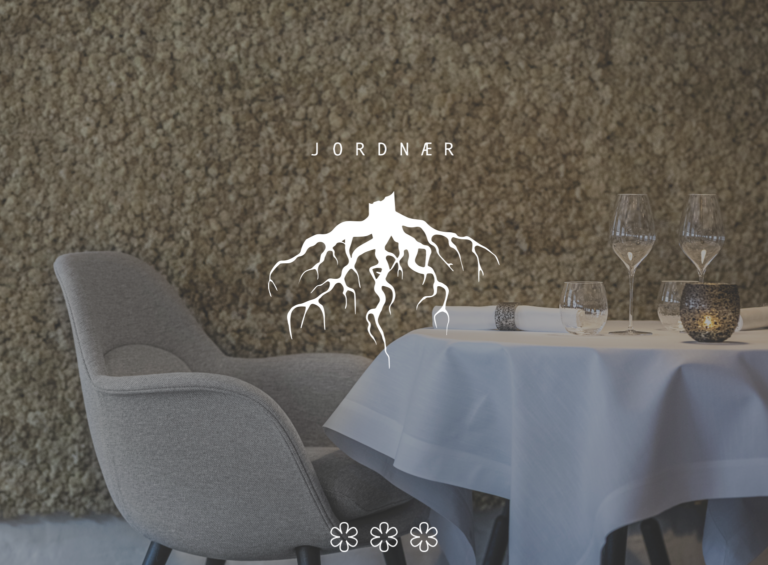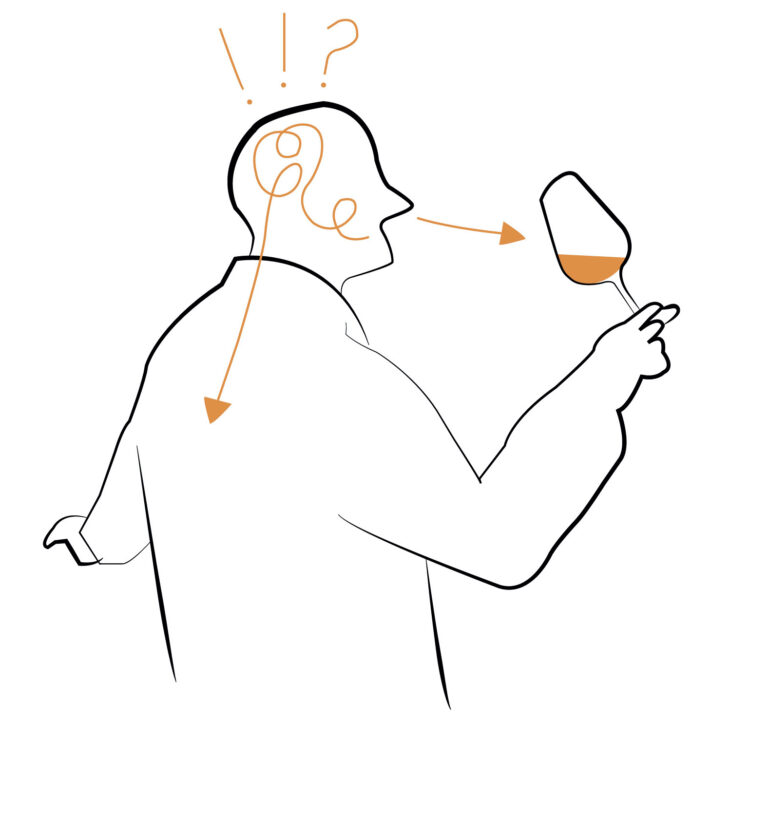Champagne, a unique sparkling wine, holds a prestigious position in the world of fine beverages. Originating from the Champagne region in France, it’s crafted using the traditional méthode champenoise. [read the full champagne story]
Estimated reading time: 14 minutes

Introduction to Champagne
Champagne, a unique sparkling wine, holds a prestigious position in the world of fine beverages. Originating from the Champagne region in France, it’s crafted using the traditional méthode champenoise. This process involves secondary fermentation in the bottle, generating the beverage’s signature effervescence.
Your discernment in wines is complemented by understanding vintage and non-vintage (NV) champagnes. Vintage champagne is produced from grapes harvested in a single year, noted for its exceptional quality and aging potential. In contrast, NV champagnes blend multiple years’ harvests, aiming for a consistent house style.
Recognize the difference between French Champagne and other sparkling wines, such as Prosecco from Italy or Cava from Spain. These use different production methods and grape varieties, resulting in unique flavor profiles.
You’ll encounter a variety of champagne brands, each with its own reputation and quality. Below is an informative outline:
| Quality | Description |
|---|---|
| Non-Vintage | Blended from multiple years, designed for immediate consumption |
| Vintage | Made from a single year’s harvest, suitable for aging |
When choosing a champagne, consider the occasion and your taste preference. Whether a crisp and lively non-vintage or a complex and rich vintage selection, champagne offers a sophisticated experience.
Champagne Production Techniques
When you explore Champagne production, understand that meticulous methods are essential to creating this prestigious sparkling wine. Vintage Champagnes are produced from grapes grown in a single year, whereas non-vintage Champagnes blend multiple years for consistency.
The use of specific grapes like Chardonnay, Pinot Noir, and Pinot Meunier differentiates Champagne styles. A Blanc de Blancs is exclusively made from Chardonnay, contributing to a lighter, more delicate profile. In contrast, Rosé Champagnes, known for their distinctive hue and fruitier notes, often blend red wine with the base.
The journey begins in the vineyard, where grape selection lays the foundation. After harvesting, the grapes undergo primary fermentation, turning sugar into alcohol with the aid of yeast. This stage influences the resulting Champagne’s acidity and complexity.
Secondary fermentation occurs in the bottle, with added dosage (a mixture of wine and sugar) prompting this second phase. This creates the signature effervescence. Aging on the lees (dead yeast cells) further develops the Champagne’s complexity, enhancing its unique minerality and textures.
The below table outlines the core components that define Champagne production:
| Component | Role in Production |
|---|---|
| Grapes | Base ingredient, variety impacts flavor profile. |
| Fermentation | Converts sugars to alcohol; primary and secondary phases. |
| Dosage | Added for second fermentation, affects sweetness. |
| Aging | Develops flavors, minimum of 15 months for non-vintage, 3 years for vintage. |
| Yeast | Essential for fermentation; influences texture and taste. |
Remember, each step is crucial in crafting a Champagne that not only sparkles but also speaks volumes about its quality through its taste and aroma.
Recognized Champagne Houses
Champagne, a symbol of celebration and luxury, originates from a region bearing the same name in France. Your journey through the vast landscape of effervescence and prestige begins with some of the most recognized champagne houses known for their history, uniqueness, and distinctive offerings.
Moët & Chandon
Established in 1743, Moët & Chandon is known for Dom Pérignon, their prestigious vintage champagne. Being a part of the LVMH group, it reflects luxury and splendid craftsmanship in every bottle.
Veuve Clicquot
With a lineage dating back to 1772, Veuve Clicquot is revered for its Yellow Label Brut, a perfect representation of harmony and finesse. Your experience of quality is elevated with every sip.
Bollinger
Bollinger, founded in 1829, stands for robustness and sophistication. Their Special Cuvée is the embodiment of a sophisticated blend crafted with dedication to complexity and richness.
Taittinger
Experience the legendary Taittinger, where tradition meets excellence. Their La Grande Dame is a toast to purity and an aromatic complexity that captivates your palate.
Louis Roederer
Enter the world of Louis Roederer, established in 1776, and discover Cristal, a pinnacle of precision ensconced in heritage, enjoyed by connoisseurs for its balanced perfection.
Ruinart
Relish the oldest established Champagne house, Ruinart, founded in 1729. Delight in their Ruinart Blanc de Blancs, a pure expression of Chardonnay grapes from the finest terroirs.
Pol Roger
Indulge in Pol Roger, a favorite among historical figures including Winston Churchill. Its rich history exudes in their pristine champagnes, collected and cherished by enthusiasts.
Piper-Heidsieck
Founded in 1785, Piper-Heidsieck is synonymous with refined elegance. Their Brut Réserve offers a classic taste profile appreciated for its balance and brightness.
Lanson
Lanson Champagne houses a heritage since 1760, inviting you to discover their philosophy of freshness, vitality, and purity in each glass poured.
Krug
Krug, known for its exceptional cuvées such as the Grande Année, represents unforgettable memories and experiences, a true treat for your senses with its deep and complex flavors.
Pommery
Since 1856, Pommery has been a prominent name, and your exploration of champagne would include their innovation and creativity, making it a brand cherished by many.
Billecart-Salmon
Billecart-Salmon, a medium-sized house since 1818, dedicates itself to finesse and elegance, offering sensory experiences that resonate with champagne enthusiasts.
G.H. Mumm
G.H. Mumm, with their signature Cordon Rouge, continues to be synonymous with quality and tradition, making it one of the most wide-reaching and beloved brands in the world.
Nicolas Feuillatte
As the newcomer in the list, Nicolas Feuillatte reflects contemporary charm since 1976, embracing modernity while maintaining the intrinsic elegance of champagne.
Laurent-Perrier
Laurent-Perrier, celebrated for its consistent quality and freshness, presents a unique range including the Ultra Brut, allowing you to appreciate champagne in its most natural state.
Armand de Brignac
Armand de Brignac, also known as “Ace of Spades” and partly owned by Jay-Z, is the epitome of luxury and exclusivity, offering a taste of opulence in every metallic bottle.
Perrier-Jouet
With an artistic flair, Perrier-Jouet and their acclaimed Belle Epoque collection represent the marriage of art and wine, offering an immersive experience with each serving.
Charles Heidsieck
Charles Heidsieck, with its richly storied history, offers the Brut Reserve Champagne which is known for its complexity and depth, a sensory delight for the discerning palate.
Salon
Embrace the exclusivity of Salon Champagne, an icon of singularity producing one cuvée only from grand cru villages, providing a rare and sought-after experience for collectors.
Delamotte
As the sister house to Salon, Delamotte prides itself on precision and purity, offering champagnes that are a reflection of their unique terroir and careful nurturing.
Canard-Duchêne
Authentic and original, Canard-Duchêne blends tradition with a down-to-earth approach, culminating in champagnes that are both approachable and captivating.
Bruno Paillard
Bruno Paillard stands as an example of innovation and dedication, producing champagnes that are fresh, elegant, and with an emphasis on low dosage, showcasing true craftsmanship.
Le Chemin du Roi
Relatively new, yet making significant strides is Le Chemin du Roi, a champagne celebrating the path of the king with its meticulous attention to quality and style.
Boizel
With a family legacy since 1834, Boizel champions the character and richness of the region, encapsulated by their meticulous selection of vineyard plots and blending.
Mercier
Mercier offers a grounded approach to champagne, providing pleasure and accessibility without compromising on quality, a staple for many champagne lovers.
Jacquesson
Emphasizing terroir and minimal intervention, Jacquesson crafts distinctive and expressive champagnes, challenging norms and exceeding expectations.
Grande Marques
Last but not least, the association of Grande Marques & Maisons de Champagne represents the benchmark of excellence, a testament to the pinnacles of craft found within these venerated names in champagne.
Terroir and Grape Varieties
Your appreciation for champagne begins with an understanding of its foundation: the terroir and the grape varieties. The terroir, a French term with no direct English translation, encompasses the geography, geology, and climate of the vineyards where the grapes are grown. This concept is especially significant in the Champagne region, contributing to the unique characteristics of the grapes there.
Champagne primarily relies on three grape varieties:
- Chardonnay: A green-skinned grape contributing to finesse and elegance.
- Pinot Noir: A black-skinned grape known for its structure and depth.
- Pinot Meunier: Another black-skinned grape that adds richness and fruitiness.
Grape Varieties Breakdown
| Grape Variety | Characteristics | Common for |
|---|---|---|
| Chardonnay | Green-skinned, brings finesse and acidity | Blanc de blancs |
| Pinot Noir | Black-skinned, adds structure | Blanc de noirs, Rosé |
| Pinot Meunier | Black-skinned, imparts fruitiness | Non-vintage bottles |
The vineyards in Champagne can be classified into various crus, with “Grand Cru” denoting the highest-ranking. These vineyards are distinguished by their optimal growing conditions, which include the ideal amount of sunlight, temperature ranges, and soil composition.
Each grape variety thrives in specific quarters of the Champagne region. The Côte des Blancs is renowned for its Chardonnay grapes, blessed with belemnite chalk that imparts a notable minerality to the wine. Meanwhile, the Montagne de Reims and the Vallée de la Marne offer ideal conditions for Pinot Noir and Pinot Meunier, with diverse soils that contribute complexity to the grapes.
Understanding these elements enables you to discern the subtle variations in your Champagne experience.
Champagne Classification and Labels
When you select a bottle of Champagne, understanding the label is key to knowing what’s inside. Champagne classifications can be divided mainly into categories based on vintage, grape varieties, and sugar content.
Vintage Champagne is produced from grapes harvested in a single year, which is prominently displayed on the bottle. Unlike non-vintage varieties that blend multiple years’ harvests, vintage Champagnes are typically aged longer and possess unique characteristics from the year’s climatic conditions.
There are different styles based on the grapes used. Blanc de Blancs Champagne, meaning “white from whites,” is made solely from white grapes, typically Chardonnay, offering a crisp and delicate profile. Meanwhile, Rosé Champagne obtains its color from the skin of red grapes or by blending in red wine and features a broader palette of flavors.
Regarding sweetness levels, Brut Champagne is very popular and usually dry, having been fermented longer to consume most of the sugar.
| Type | Definition |
|---|---|
| Vintage | Made from a single year’s harvest. |
| Non-Vintage | Blend of multiple years. |
| Brut | Dry, low sugar content. |
| Rosé | Pink hue, may include red wine blend. |
| Blanc de Blancs | Made exclusively from white grape varieties. |
Quality is often linked to the vineyard location and renown of the Champagne house. It’s helpful to consider these factors along with your personal taste preferences in grape varieties and style to make the best choice.
Sensory Characteristics of Champagne
When you take a sip of Champagne, your palate is greeted by a complex array of flavors and aromas, subtly different in each bottle. The sensory experience of Champagne can be broken down into components which include visual appeal, texture, aroma, and taste.
Visual Appeal: The elegance of Champagne begins with its effervescence and golden hue. Upon pouring, you’ll notice the delicate bubbles rising to the top, creating a persistent sparkle.
Texture: On sipping, you’ll feel the lively mousse on your tongue — this refers to the creamy, effervescent texture that is often linked to the quality of the Champagne.
Aroma and Taste:
- Citrus & Green Fruit: You’re likely to detect notes of citrus, such as lemon or grapefruit, giving Champagne its characteristic zesty freshness. Alongside these, green fruits like apple and pear can be identified, contributing to the wine’s crispness.
- White & Red Fruit: White fruits such as peaches and white berries are commonly found in the aroma profile, offering a pleasant sweetness, while notes of red fruits, especially strawberry, add to the richness and depth of flavor.
- Floral & Honey: Floral notes, hinting at hawthorn or acacia, blend with sweeter hints of honey, round out the Champagne’s aroma, giving a feel of the exquisite.
- Brioche & Cream: Aged Champagnes often have a remarkable brioche or toasted bread quality, with some attributing a creamy texture to the liquid, due to the presence of yeast during the fermentation process.
- Spices & Berries: Spices may not be at the forefront, but they subtly enhance the complexity of Champagne, just as the nuances of berries can.
While tasting Champagne, you’ll often hear descriptors like lightness and freshness, reflecting its effervescence and the lively acidity that makes it so refreshing. When tasting, take a moment to observe the intricate balance between these elements. Each sip unfolds with different notes making your experience with Champagne unique and memorable.
Champagne Serving and Storage
When you’re ready to serve Champagne, the right temperature is key for optimal taste. Aim to chill your bottle to approximately 45-50 degrees Fahrenheit (7-10 degrees Celsius). This cool temperature helps to maintain the effervescence and enhance the flavor profile.
Upon serving, choose the appropriate glassware; a flute or tulip-shaped glass is ideal. These glasses are intended to reduce the surface area at the top, preserving the bubbles and directing the aroma for a better tasting experience.
For storing Champagne, a cool, dark environment—such as a wine cellar—is optimal, keeping the temperature steady around 55 degrees Fahrenheit (13 degrees Celsius). If you’re aging Champagne, horizontal storage keeps the cork moist, preventing unwanted air from getting into the bottle and impacting the aging process.
Remember, the success in serving and storage lies in maintaining these specific conditions to ensure the quality of your Champagne experience.
| Aspect | Details |
|---|---|
| Temperature for Serving | 45-50°F (7-10°C) |
| Glassware | Flute or tulip-shaped glass |
| Storage Temperature | Around 55°F (13°C) |
| Aging Storage Position | Horizontal to keep cork moist |
Note that the cork of your Champagne bottle should be removed gently to preserve the integrity of the wine and prevent accidents. Never point the bottle at anyone, and twist the bottle—not the cork—until you hear a soft sigh, signaling a successful opening.
Historical Significance and Notable Figures
Ruinart: Established in 1729, Ruinart is recognized as the oldest champagne house. You can admire the legacy of Dom Thierry Ruinart, an innovative Benedictine monk whose vision shaped the beginnings of champagne as you know it.
Moët & Chandon: Founded in 1743, this house boasts figures like Jean-Remy Moët, a pioneer in international distribution. Moët & Chandon has been the symbol of luxury and celebration, tied to notable events and figures, including Napoleon Bonaparte.
Veuve Clicquot: Your insight into champagne is not complete without acknowledging Madame Clicquot, the “Grande Dame of Champagne.” In the early 19th century, she developed the riddling table technique to clarify champagne, significantly influencing the industry.
Bollinger: Since 1829, Bollinger has been synonymous with consistency and character, partially attributed to Lilly Bollinger who ran the house post WWII. Her traveling and marketing expanded Bollinger’s global reputation.
Dom Pérignon: Named after a 17th-century monk, Dom Pérignon is associated with the creation of the first vintage champagne. Though the story of him inventing champagne is myth, his contribution to quality and standards in champagne production is undisputed.
- Louis Roederer: Cristal, created in 1876 for Alexander II of Russia, is Roederer’s crowning jewel. You can’t overlook Roederer’s impact in catering to the tastes of nobility, thus etching its name in the annals of champagne history.
Through each pour, you’re not simply tasting a beverage; you’re experiencing the rich tapestry of history and achievements woven by these notable figures.
Exploring Champagne Region
When you visit the Champagne region in northeastern France, you immerse yourself in an area where the rolling vineyards and ancient methods create a tapestry of wine-making history. The region’s unique terroir, a French term denoting the combination of soil, climate, and landscape, plays a pivotal role in the cultivation of grapes that produce the distinct character of Champagne.
| Important Areas | Notable Characteristics |
|---|---|
| Montagne de Reims | Known for Pinot Noir vines |
| Côte des Blancs | Renowned for Chardonnay |
| Vallée de la Marne | Predominantly Meunier |
Your journey through the Champagne region would not be complete without exploring the expansive vineyards that stretch over 34,000 hectares. Each vineyard reflects the essence of its location, with careful nurturing ensuring that every grape contributes to the exceptional quality of Champagne.
The influence of Champagne houses is evident as you tour the region. These houses, steeped in tradition, have honed their craft over centuries. By visiting cellars and tasting rooms, you gain insight into the meticulous production process, from grape picking to the intricate art of blending.
Epernay and Reims stand as the main cities anchoring the region. Epernay is often considered the heart of Champagne and home to many prestigious Champagne houses. The Avenue de Champagne in Epernay is especially famous, lined with opulent mansions housing renowned labels. In contrast, Reims is known for its historical significance and for housing several UNESCO World Heritage Sites, including the cathedral where French kings were traditionally crowned.
As you traverse this iconic landscape, remember that each bottle of Champagne is a representation of the region’s heritage, a celebration of its distinct terroir.
Frequently Asked Questions
When exploring the world of champagne, you likely have questions about the most esteemed brands, the hidden gems among smaller producers, the iconic houses with deep historical roots, and the experiences available on champagne tours. The following FAQs provide specific insights for your champagne inquiries.
What are the top-rated champagne brands currently favored by connoisseurs?
Connoisseurs currently hold high regard for brands like Dom Pérignon, Krug, and Louis Roederer—particularly its Cristal label. These brands have consistently impressed with their complexity, balance, and aging potential.
Which champagne producers are considered the best smaller houses for unique and high-quality selections?
Smaller houses such as Agrapart & Fils and Jacques Selosse have garnered attention for their unique, terroir-focused champagnes. They offer high-quality selections that reflect the dedication to artisanal production methods.
What are some of the most prestigious and historically significant champagne houses in France?
The prestige of Moët & Chandon, established in 1743, or Veuve Clicquot, with its origins dating back to 1772, is synonymous with champagne history in France. They are known for their longstanding heritage and have been integral in defining the champagne industry.
Could you provide an overview of the most popular champagne brands known globally?
Globally, brands such as Moët & Chandon, Veuve Clicquot, and Perrier-Jouët are among the most recognized. Their widespread availability and consistent quality make them popular choices for a variety of occasions.
Among the variety of champagne producers, which are recognized for producing the most luxurious and expensive bottles?
For the most luxurious and expensive bottles, look to producers like Krug, particularly their Clos du Mesnil and Clos d’Ambonnay, and Dom Pérignon’s Plénitude series (formerly Oenothèque). These brands stand out for their exclusivity and exceptional craftsmanship.
For a visitor interested in champagne, which houses offer the most informative and enjoyable tours?
Champagne houses known for exceptional tours include Taittinger, with its expansive cellars in Reims, and Maison Ruinart, offering a deep dive into the region’s history and production methods. These tours provide a comprehensive view of the intricate process of champagne making.





